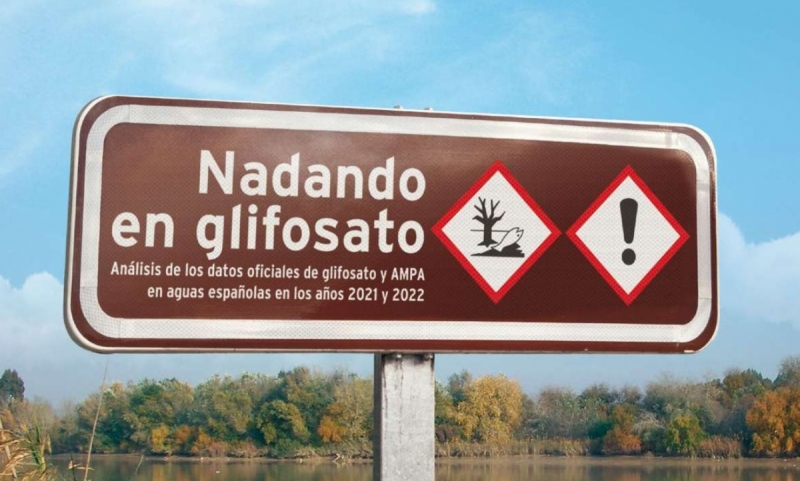As Spain is about to vote on whether to confront its population and nature with another 10 years of glyphosate (active substance of herbicides such as Roundup), the official analyses of Spanish water bodies speak clearly: in 2022, 34.6% of Spanish surface waters were contaminated by glyphosate in a concentration that does not comply with the environmental quality standard. Regarding AMPA, the main toxicant generated in the degradation of glyphosate, 13.7% of the sampling points were contaminated. Regarding groundwater, the scarcity of official analyses carried out is surprising, 96% less than in surface water.
Detailed data, prepared by Ecologists in Action, show that in 2021 glyphosate was present in 29% of the official analyses carried out, and 21% of them did not comply with the quality standard.
The Guadiana River has the dubious honour of having given the worst contamination data in Spain: 308.10 micrograms of glyphosate per litre, 3,000 times higher than what is allowed by law. In 2021, the basins with the highest number of stations at risk for glyphosate contamination were Andalusian: the Andalusian Mediterranean basins, Gaudalete-Barbate and Tinto, Odiel and Piedras; followed by the Tajo, Júcar, and Guadiana.
In 2022, the first year in which analyses were carried out, the internal Catalan basins rose to first place in the number of points at risk of contamination by this herbicide. With glyphosate, Spain is in breach of pesticide regulations: it does not comply with contamination limits and does not seek the alternatives required by integrated pest management. Hence, sales of the herbicide have increased by 76% in 10 years, reaching more than 13 million kg in 2020.
Given these worrying data on the contamination of Spanish water bodies by glyphosate, Ecologists in Action asks the Government to oppose the renewal of the authorization of glyphosate in the European Union, for the improvement of the environment and human health.
Read more (in Spanish).
